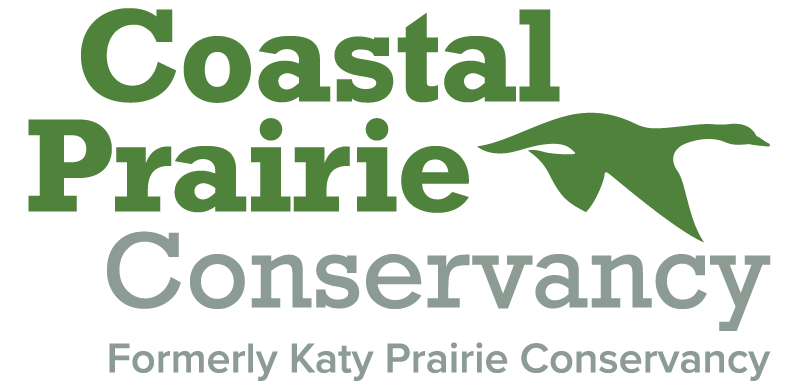Black-Necked Stilt
by Christine Naspinski
Photo Courtesy of Greg Lavaty.
Although the coastal prairie in July can be hot, muggy and buggy, the birds are still busy going about their lives. Among the birds wading in prairie wetlands, Black-necked stilts can be seen walking slowly and gracefully on impossibly long, pink legs, with a striking body pattern of black above and white below. You can find these elegant birds along the Gulf Coast year-round, but inland they are more common in the spring and summer months.
The Black-necked Stilt (Himantopus mexicanus) is one of the larger shorebirds in North America and is in the same family as the American Avocet. Adults are tall and delicate-looking with starkly contrasting black and white plumage, thin black bill, salmon-pink legs, and red eyes. The face, front of the neck, breast and belly are bright white. Solid black extends from the top of the head and around the eye down to the back and wings. Females tend to be lighter black or more brownish than males. Males in breeding plumage are glossy black above with a tinge of pink on their upper breast. This time of year, you might see young birds in their juvenile plumage. They have a pattern similar to the adults, but the dark areas are mottled brown, and their legs are paler.
Photo courtesy of Greg Lavaty.
Black-necked Stilts are found throughout much of the Americas and the Caribbean, especially in coastal areas. The birds we see on our Texas prairies in summer may be year-round residents or migrants from Mexico and Central America. They live in shallow wetlands such as saltmarshes, mudflats, lakes, and lagoons, and will inhabit human-created wetland areas like evaporation ponds and flooded agricultural fields. In fact, the ability to take advantage of these artificial habitats has probably contributed to recent expansion of their breeding range.
These stilts eat a variety of small creatures that live in and around shallow water, such as insects (larvae and adults) and crustaceans. They capture food by picking from the surface of water or mud, or immersing their head to grab something they see in the water. At times they swing their bill side-to-side in the water while they walk, or snatch a flying insect out of the air. They may forage alone or in groups. To see some of their feeding and flocking behaviors, check out this video from Cornell Lab of Ornithology. Can you spot an American Avocet or two among the stilts?
Photo courtesy of Greg Lavaty.
Summer is a great time to enjoy watching Black-necked Stilts on the coastal prairie. Spots where you might see them include wetlands around Indiangrass Preserve (eBird hotspot page) and Warren Lake at Shrike Prairie (eBird hotspot page).
Fortunately, the conservation status of the Black-necked Stilt is Low Concern and the population may be increasing as they expand their breeding range. Still, these birds rely on healthy wetland ecosystems throughout their life cycle. When we take steps to protect and preserve prairies and wetlands, and prevent contamination of our watersheds, we help these beautiful shorebirds continue to thrive.
To learn more about the Black-necked Stilt, see these resources:



